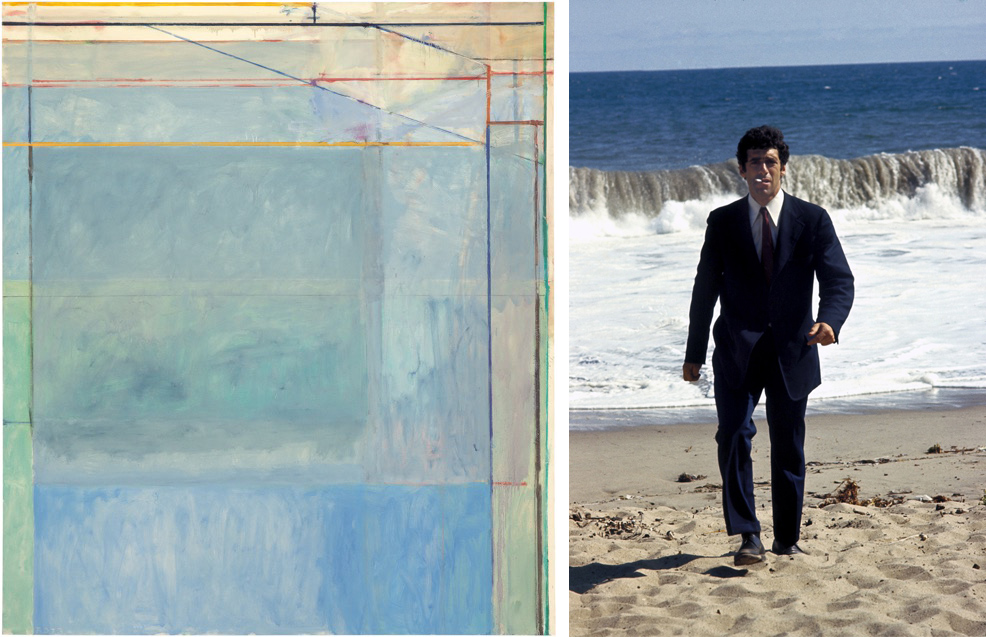If you’d been dragging your feet on getting to Palo Alto for the Anderson Collection’s Nick Cave exhibition (of Soundsuits, not Bad Seeds fame), now is the time. In addition to person-sized sculptures made for shimmying, the free collection displays Abstraction and the Movies March 1-17 only.
Curated by current Stanford undergrad Carlos Valladares, Abstraction and the Movies pairs works from the Anderson Collection with images and posters from films of the “classical Hollywood period,” defined as the years between the introduction of sound (1927) and the release of Bonnie and Clyde (1967).
While Valladares makes no claims that the abstract paintings directly influenced a film’s aesthetics, the similarities speak to the time and place of their making, visual proof of a zeitgeist in both high art and mass media. Valladares, who will graduate in 2018 with film and media studies and American studies degrees, is currently enrolled in a class on abstract expressionism with professor Alexander Nemerov. After multiple visits to the Anderson Collection, Valladares and Neverov approached the collection with the idea for Abstraction and the Movies.

“Unexpected angles reveal fresh visions of what these works were and are,” Valladares writes in the exhibition text. He describes the selections as “openly personal,” rooted in his own love of film.
Pairings include Mark Rothko’s Pink and White Over Red (1957) and the fiery poster for Vincente Minelli’s 1958 drama Some Came Running. Behind dramatic illustrations of a young Shirley MacClaine, Dean Martin and Frank Sinatra, the film’s poster recalls the brushy reds and pinks of Rothko’s rectangles.



